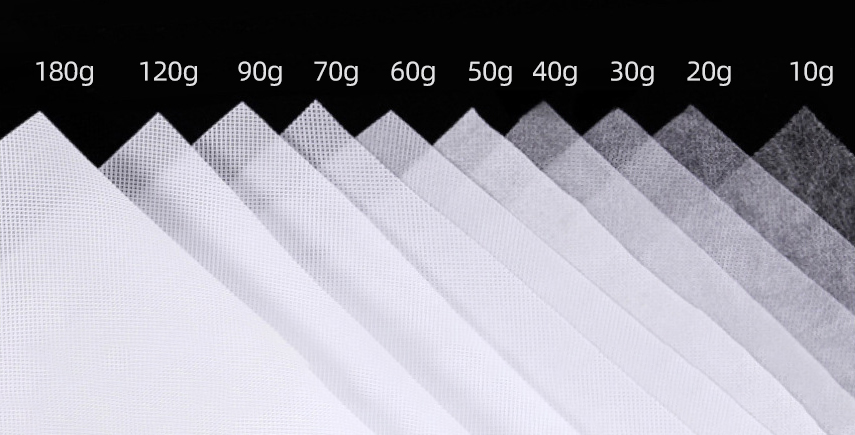Introduction to Non-Woven Fabrics
Non-woven fabrics are a type of textile structure. They're made from directional fibers. These are bonded together without weaving or knitting.
What sets non-wovens apart is their formation from a web of fibers. They're not woven, hence the name. These fabrics are known for their strength, durability, and flexibility. They're lightweight and can be made from various materials. Non-wovens are used in a wide range of products. You'll find them in everything from medical supplies to construction materials.They offer many advantages. For one, they're cost-effective to produce. They're also environmentally friendly, often made from recycled materials.

Industries:
The versatility of non-wovens makes them valuable across industries. From healthcare to agriculture, their uses are vast.
In essence, non-wovens are a dynamic material. Their unique production process allows for endless customization. This makes them an ideal choice for many applications. Let's delve deeper into how they're made.
Understanding the Manufacturing Process
Web Formation: The First Step
Web formation is key in non-woven production. It's where fibers come together to form a network.
Drylaid:
This technique skips the water, using air to arrange fibers into a web. It's quick and efficient.
Wetlaid:
Here, water helps suspend fibers. The water is drained, leaving a mat of fibers ready to be bonded.
Extrusion Polymer Processing:
Polymers are melted and extruded. This method is versatile and used for various non-woven applications.
Web Bonding: Strengthening the Fabric
Once the web is formed, it's time to bind the fibers together. This is crucial for the fabric's strength.
Chemical Bonding:
Adhesives are applied. These can be water-based or solvent-based, creating a strong bond.
Mechanical Bonding:
This involves physical entanglement. Techniques like needlepunching are used to interlock fibers.
Thermal Bonding:
Heat is applied to fuse fibers. This method is effective for thermoplastic fibers like polypropylene.
Finishing Treatments: Enhancing the Product
After bonding, the fabric undergoes finishing treatments to refine its properties and appearance.
Chemical Finishing:
Chemicals are used to alter the fabric's properties. This can make it more absorbent, water-resistant, or soft.
Mechanical and Thermal-Mechanical Finishing:
These processes adjust the fabric's texture and structure. They can create a smooth surface or a textured feel.
The non-woven manufacturing process is a sequence of artful techniques. Each step from web formation to finishing treatments contributes to the final fabric's quality and characteristics. This process results in fabrics that are durable, versatile, and suited for a wide range of uses.
Types of Non-Woven Fabrics
Spunbond Nonwovens
Spunbond nonwovens are crafted through a continuous process. Fibers are spun and laid down directly to form a strong, uniform web. This method is favored for its efficiency and the durability of the resulting fabric.
Melt-Blown Nonwovens
Melt-blown fabrics are known for their fine fibers. Produced using a high-velocity air stream, these fibers create a dense web that's perfect for filtration and medical applications.
Spunlace Nonwovens
Spunlace nonwovens are made using high-pressure water jets. The water entangles the fibers, forming a web that's both soft and strong. This process is environmentally friendly and versatile.
Flashspun
Flashspun fabric is created through a unique process. A polymer is dissolved and sprayed into a chamber where the solvent evaporates quickly. The result is a fabric that's well-suited for hygiene products.
Air-Laid Paper
Air-laid paper stands out as a non-woven fabric made from wood pulp. Unlike traditional papermaking, no water is used in this process. Instead, air carries and deposits the fibers to form a soft, cushiony material.
Each type of non-woven fabric has its own set of properties and applications. From the strength of spunbond to the softness of spunlace, each fabric is designed to meet specific needs. This diversity is what makes non-wovens so valuable across a range of industries.
Conclusion
The non-woven manufacturing process is a testament to innovation. It starts with web formation, where fibers are carefully arranged. Then comes web bonding, which strengthens the fabric through various methods. Finally, finishing treatments refine the product for specific uses.
This process results in fabrics that are versatile and efficient. Non-wovens are durable, flexible, and can be tailored to numerous applications. They're used in medical supplies, hygiene products, construction, and more.
The role of non-wovens extends to sustainability. Many non-woven fabrics are made from recycled materials. Their production often involves less water and energy compared to traditional textiles. This eco-friendliness aligns with our global efforts to reduce waste and conserve resources.
In a future focused on sustainability, non-wovens have a significant role. They offer practical solutions that balance performance with environmental responsibility. As technology advances, we can expect even more innovations in non-woven manufacturing, further enhancing their utility and sustainability.
In summary, the non-woven manufacturing process is a blend of science and technology. It produces fabrics that are valuable in our daily lives and contribute to a sustainable future. Understanding this process helps us appreciate the fabrics' benefits and potential.











